Whether you’re providing social media management, marketing, or consulting services, the crucial step in winning a client is sending out a business proposal.
A business proposal can help you prove to clients’ that you’re the most well-suited to meet their needs, and help you stand out from the competition.
And, if you’re particularly interested in providing social media-related services, you’ll need to create a social media proposal.
Here, we’ll explore best practices for creating a social media proposal that will enable you to exceed client expectations and expand your portfolio.
But first, let’s zoom out and take a wider look at the social media sales process. There are quite a few stages you have to successfully complete — and things to do right — before even starting your proposal.
Let’s dive into that, now.
A Brief Overview of the Social Media Sales Process
There isn’t a one-size-fits-all sales workflow that you should follow to win a social media job, but most of the times you’ll go through the following stages before closing a sale:
- Prospecting
- Discovery
- Proposal
To ensure that all your prospecting efforts don’t go to waste, it’s super important to get as much information from a discovery stage as possible. One thing to keep in mind – a business proposal is just a presentation of the things you’ve discovered. If you skip this step, you won’t have anything to write about in your proposal.
The discovery session could be a video call or an actual meeting at a hotel lobby as long as you get to chat with the prospect and understand what it is that she really needs.
This task may sound simple at first, but in fact, you may realize the client doesn’t understand why she needs social media services, or across which platform(s) she needs those services distributed. This is where I suggest becoming a psychologist for an hour, and asking the following ‘Why’ questions:
- Why did you choose Facebook over Twitter for your social media activities?
- Why did you stop running Facebook ads?
- Why did you change your LinkedIn posting schedule two months ago?
Clearly, you’ll need to do your homework prior to a discovery session, reviewing and analyzing the client’s social media profiles (as well as their top competitors), and what they’ve done on their social channels so far.
If you can’t get to the root of the problem, you may use the 5 Whys analysis which involves even more ‘Why’ questions. Eventually, if you understand your clients and how they think, you’ll be able to write a proposal that speaks your clients’ language, addresses their needs, and presents the exact solution to their problem. That is the proposal that is very likely to win a client.
The Anatomy of an Effective Social Media Proposal
Next, let’s move onto the actual structure of an effective social media business proposal. You can create a proposal from scratch or simplify your life significantly by using a free social media proposal template that already has the pre-written texts and is broken down into sections.
One way or another, it wouldn’t hurt to get familiar with the must-have social media proposal sections:
1. Introduction. Nailing the proposal introduction is winning half the battle. Remember the discovery session where you should find out the true meaning of what they’re after? Introduction is the place where you will repeat the exact words used by your client to describe their problem. No matter how tempting it may be, this is not a place to speak about your company and its history or mission. Introduction isn’t about you — it’s about your clients’ needs described in their language.

2. Scope of work. A well-written detailed scope of work leaves very little room for future misunderstandings. Here’s where you specify the exact list of activities that are meant to solve the client’s problem. Explain how your service is going to help tackle the issue and outline the scope of work required for that. Speak of the social media goals that you’re going to achieve with your service, and list the social media activities you’re going to be working on. Depending on the social media services you provide, you may want to mention:
- Content creation. Specify what kind of written and visual content you are going to create, how often and how it’s going to be approved by the client.
- Publishing schedule. Let your client know when, where and what time the pre-approved posts will be going live on different social media platforms.
- Launching social media special offers. Let the client know the nature of the special offer you are planning to launch whether it’s going to be a contest, special discount, giveaway or else. Specify the timing, frequency, assets and media budget required.
- Monthly strategy sessions and weekly calls. Plan out the one-to-one calls to review the last month’s activities and plan the month ahead. Let the client know if you are going to sync up every week to make sure you are on track.
- Monthly KPIs and reporting. Depending on the client’s goals, outline how you are going to measure the social media progress and which metrics you’ll use as indicators.
Additionally, don’t forget to speak of the benefits your customer should expect.
As Kinga Odziemek, CEO at social media marketing agency
BrainyBees, says: “Your clients need to understand not only what you will deliver, but also what’s in it for them.”
Odziemek adds, “What does it mean that you will do A, B or C for them? How will this be reflected in their business? What are the benefits? Showing the benefits will encourage potential clients to take the next step more quickly than you might expect.”
For greater clarity, finish up the scope of work with the timeline where you specify the exact steps you are going to take over the first month. This way it’s clear what a client can initially expect from you, and when.
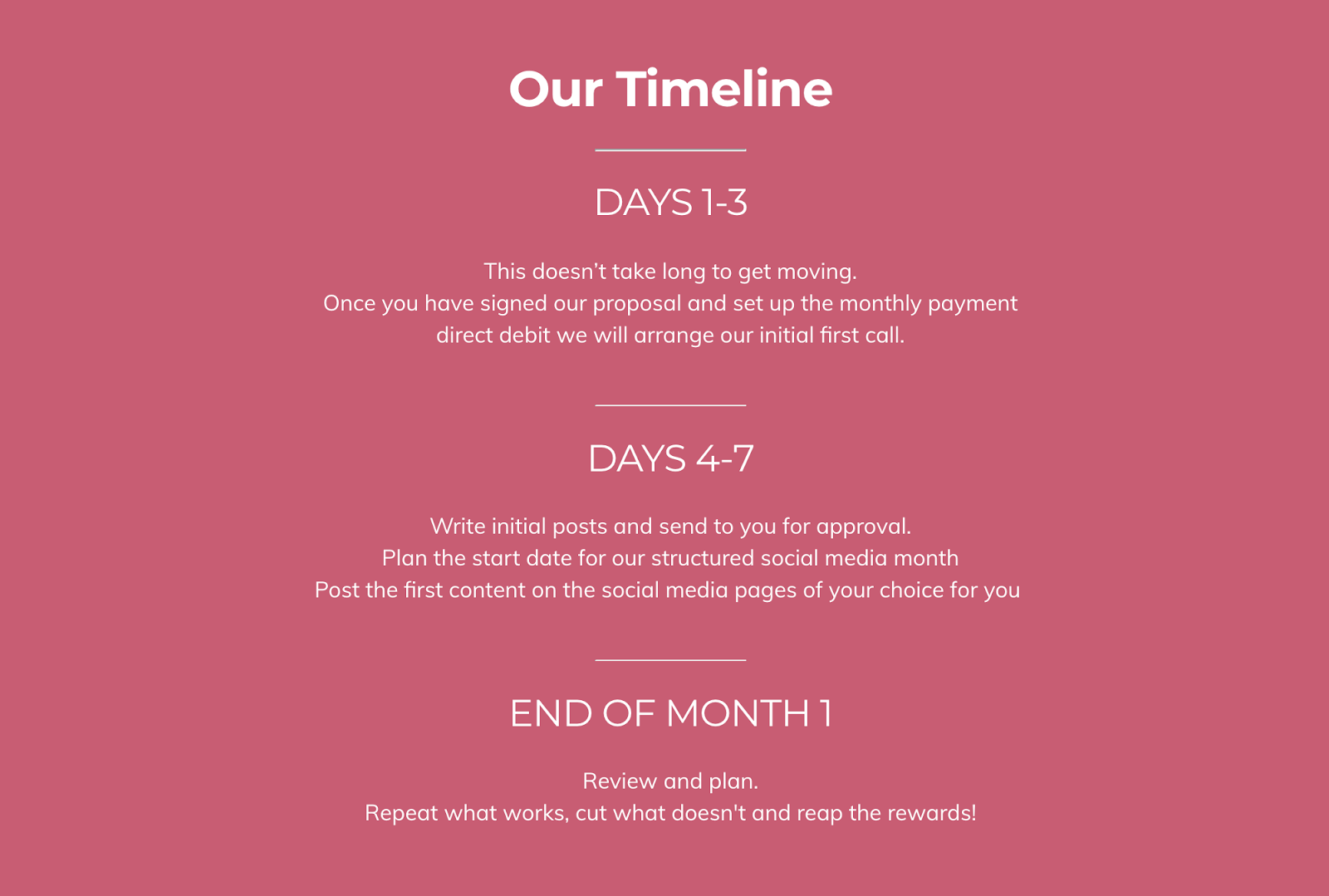
3. Case studies. Prospects want to see what you have accomplished in the past for other clients. It’s the social proof that tells the client you are actually able to achieve the goals. If you haven’t had great social media results in the past, how can a client know you’ll succeed this time? Try to include a case study or two from a client in a similar industry, or with similar issues and goals.
It’s important to note — if your prospect is treating social media as a lead acquisition channel, referring to case studies showcasing how you’ve been able to grow number of followers isn’t helpful for them. Keep it relevant. Another rule of thumb for case studies is keeping the focus on results rather than how hard you worked to achieve them.
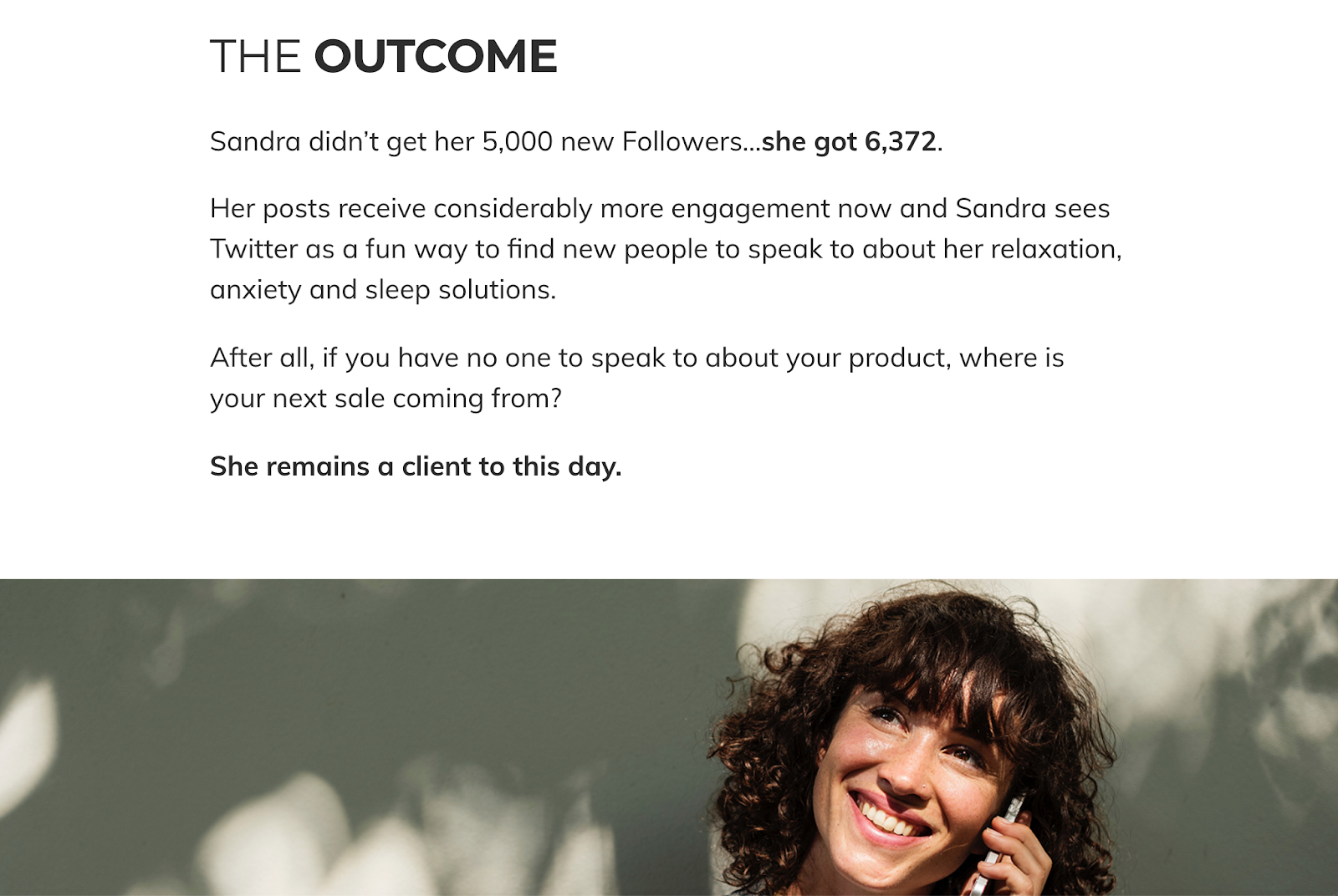
4. The pricing. This is a very important part of the proposal. Some of your clients will skip the entire proposal and get straight to the Pricing. What we’ve found after analyzing almost 200K proposals sent with Better Proposals is that putting the title ‘Investment’ on the pricing section (instead of ‘Pricing’) increases your chance for closing a deal. It works as a psychological trick – the client perceives the amount of money as an investment (that they’ll receive back in ROI) rather than dollars to which she needs to bid farewell.

5. Next steps. This proposal section is often neglected. However, I strongly recommend including next steps to your social media proposal so your prospects know what they should do next. Of course, they can always email you asking what’s next, but why not make their life easier? Just put it in simple words, like in this example below.
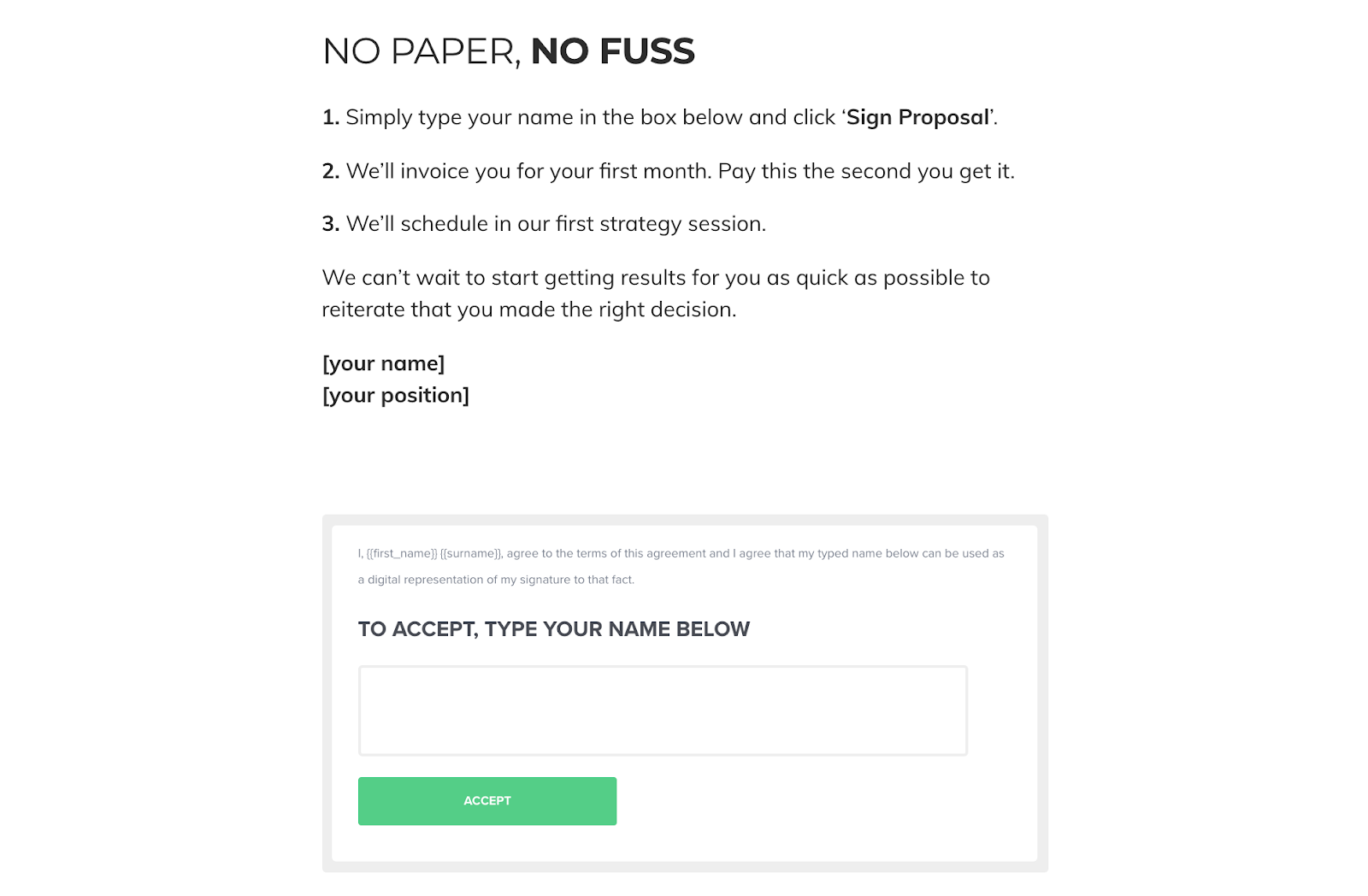
6. Terms and conditions. Don’t neglect the legal part of your proposal, as this is your only protection in case your relationship with the client becomes impaired. Make sure to secure your agency by specifying what’s going to happen when and who’s responsible for what. If you don’t want to hire a lawyer to do the job, at least use one of the online tools to generate the terms and conditions. I recommend keeping the contract and terms and conditions part of your business proposal. This way they are bind together and you won’t be facing any confusion caused by the wrong expectations of your client.
The How and When of the Social Media Proposal
Now that you’re familiar with the main sections of the business proposal, let’s focus on the best practices for sending your proposal that will get you from “eh, maybe” to “heck yes!”
Proposal Format: The Era of Word and PDF Withers Away
It’s no secret that more and more people consume digital content via mobile devices these days. Business proposals are no exception. In fact, our analysis of 200K+ proposals showed that 34% of proposals are opened on mobile.
Now, think about it — if you opened a Word proposal on your mobile and you need to endlessly scroll left and right to read it, would you even read it to the end? I wouldn’t.
You want to make an impression that your social media squad is full of tech savvy people always on the top of their game. This can’t be achieved with a non-responsive business proposal. If you’d like to create a pleasant responsive experience for your prospect, present a proposal as part of your website (given that your website is responsive, of course). The easiest way is to make use of a proposal software that lets you do this.
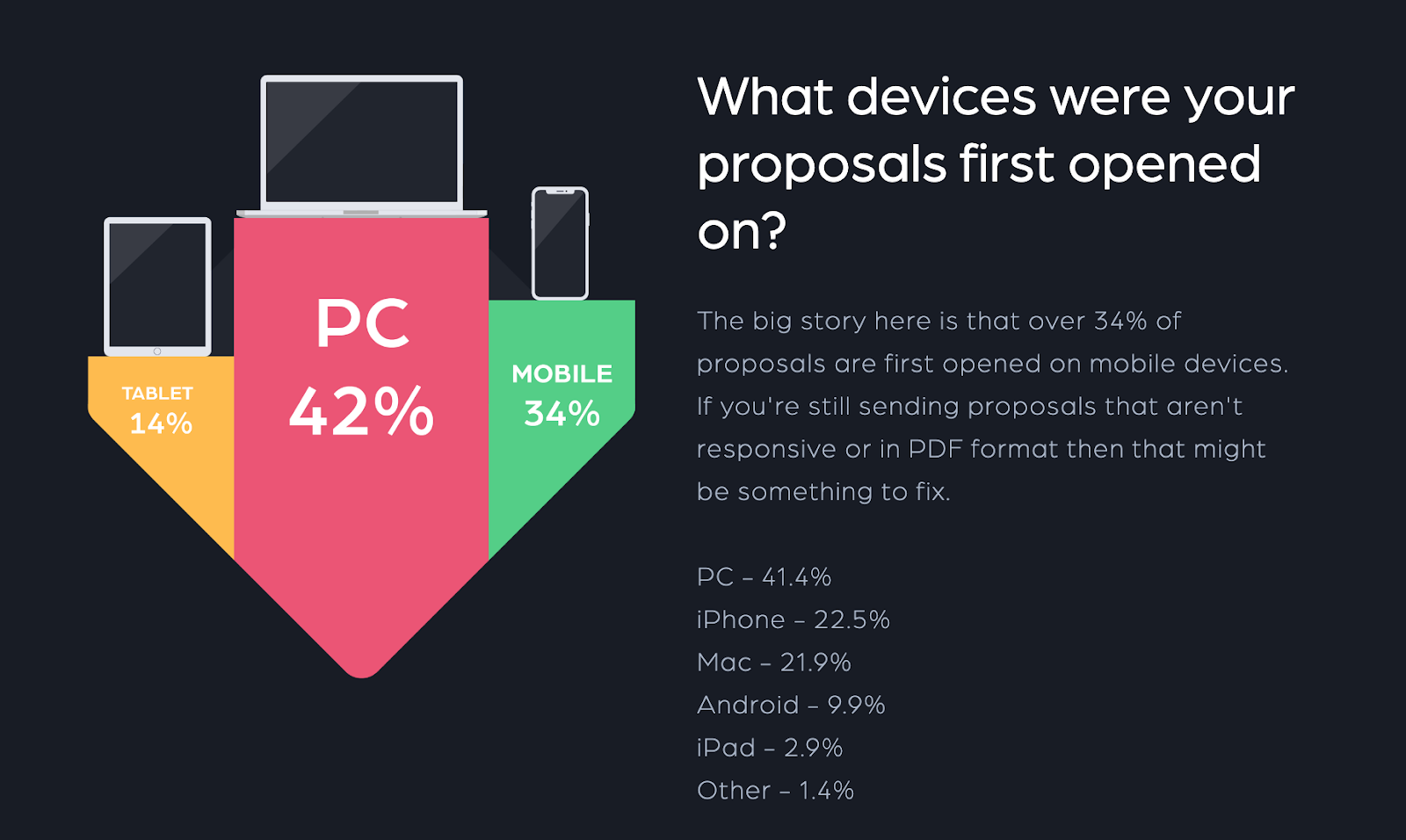
The Best Time to Send a Proposal
Unlike social media statistics where there are recommended times and days for posting on different platforms, we haven’t discovered a pattern for sending out business proposals.
There’s a slight 0.9% increase in conversion for proposals sent on Monday, which is not significant enough to create any sort of best practices around it. However, sending proposals within 24 hours, compared to 3-4 days after the meeting, increases your chances to hear a yes by 14%.
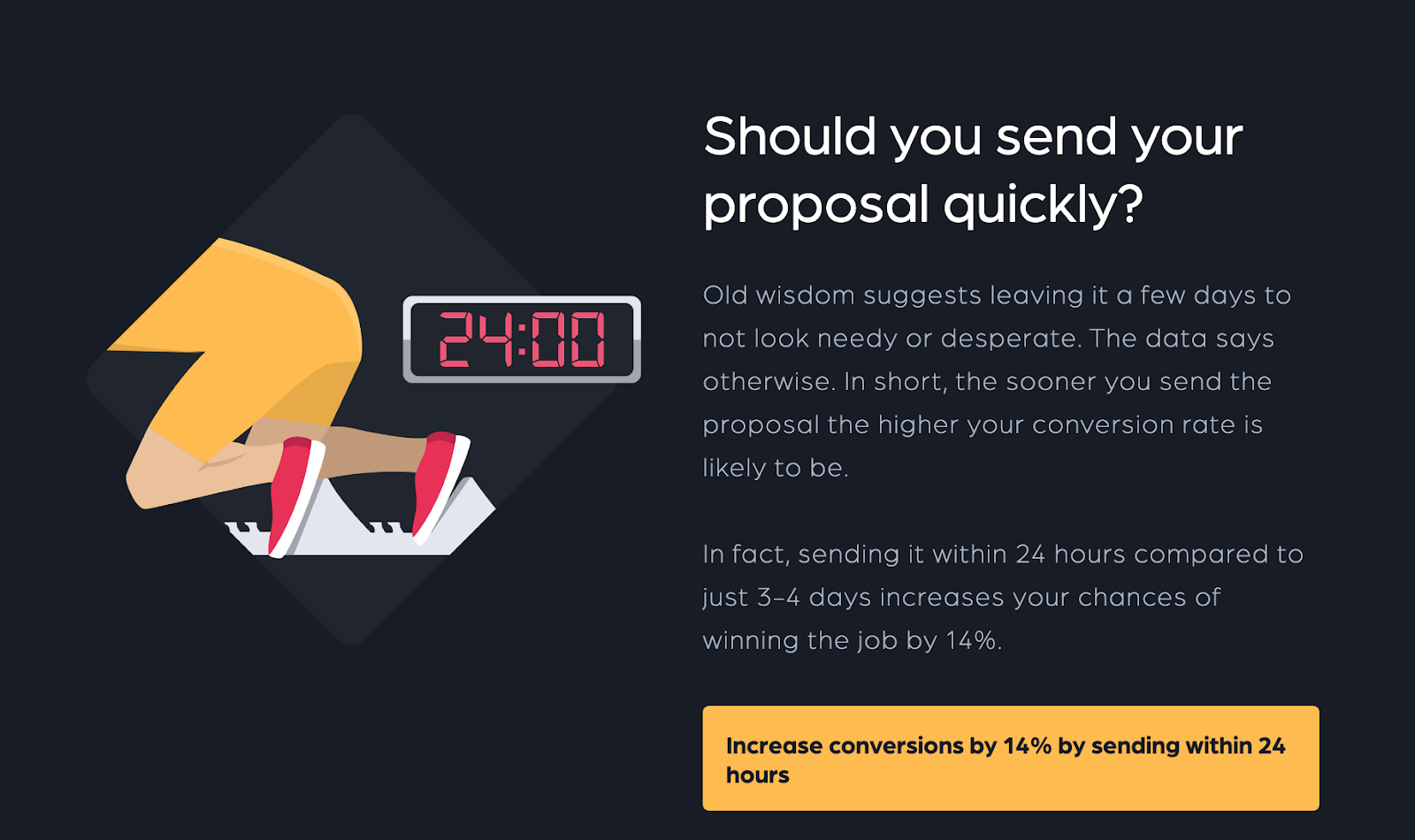
Additionally, our analysis demonstrated printing a proposal lowers your chance for a conversion by a whopping 78%. Therefore, the best advice I can give is avoid anything printed at all costs.
Luckily, it’s 2020 and electronic signature software tools like DocuSign or DocuSign alternatives are on the rise, which saves everyone a great deal of time signing a proposal.
Moreover, with payment system integrations, bringing your prospects right to the payment page is a breeze. The hassle-free proposal experience of 2020 cuts down the unnecessary steps of printing, scanning, emailing, calling, invoicing and leaves the essentials: sending an effective proposal and winning new clients as a result.
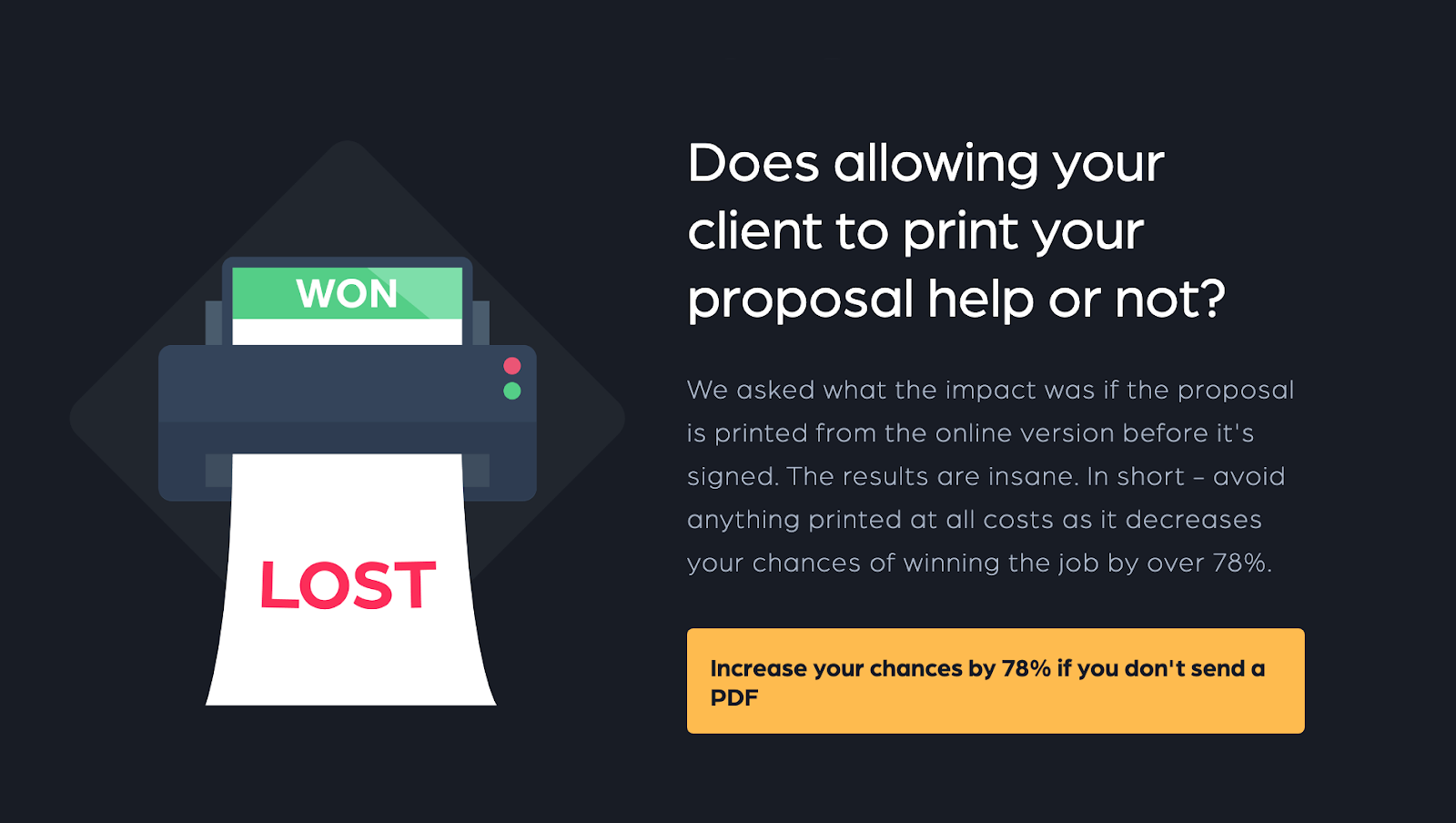
Just like any other proposal, a social media proposal requires some effort from your side starting with a thorough and well-prepared discovery session, asking the right questions and going down to the root of the problem. Once you have that in place, the rest is fairly easy. The actual proposal writing boils down to a set of proposal best practices as well as technical hacks to make a great impression, prove that you are the best for a job and prevent your clients from jumping the hoops.
![]()
Original Entry: The Start-to-Finish Guide to Writing a Social Media Proposal is shared from https://blog.hubspot.com/marketing/social-media-proposal via https://blog.hubspot.com/marketing
Check out the original post, The Start-to-Finish Guide to Writing a Social Media Proposal that is shared from https://putyourfamilyfirst.wordpress.com/2020/06/16/the-start-to-finish-guide-to-writing-a-social-media-proposal/ via https://putyourfamilyfirst.wordpress.com
No comments:
Post a Comment